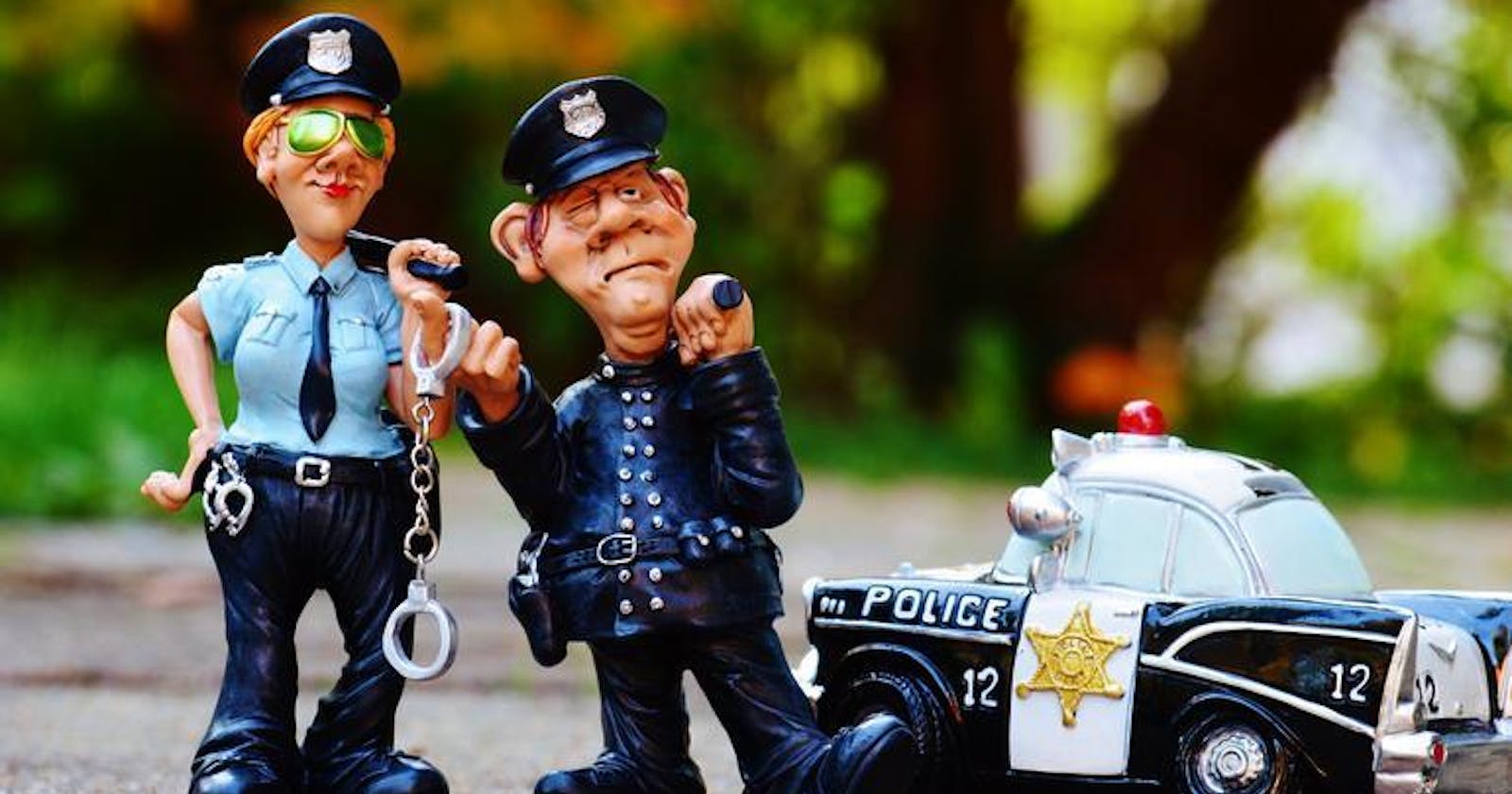
Introduction
In recent times there has been an uprise in the advocacy against unjustified shooting by police in this US. Police exist to create order in society by enforcing the law to reduce or totally eradicate one's infringement of another's right. Many question the reasonableness of Police to utilize brutal force in discharging her duties. The use of force by the police is a major intrusion into personal liberty and has raised social interest. This social construct is often linked to race and further intensifies the question of racial distribution of the killings. In the midst of racism discussions, what does the data say?
What do I hope to achieve?
I used data analysis tools and techniques to summarize the dataset and provide insights from many perspectives and most importantly shed light on the objective reasonableness of the officer's decision to use deadly force.
About the data
The Washington Post has kept records of Police shootings in the US between 2015 to 2020. The data was cleaned and uploaded to Kaggle by Ahsen Nazir. You can find the data here.
The dataset includes the following information;
- name: Name of the victim
- date: Date in which the victim was shot by the Police.
- manner_of_death: The way the victim died, was he just shot? , or was he tasered first then shot?
- armed: indicates that the victim had an object believed to inflict harm.
- age: the age of the victim
- gender: the gender of the victim.
- race: indicates whether the victim is White, Black, Asian, Hispanic, Native American or Others
- city: the municipality where the fatal shooting took place.
state: two-letter postal code abbreviation of the state where the victim was killed
signs of mental illness: indicates whether the victim had a history of mental health issues, expressed suicidal intentions or was experiencing mental distress at the time of the shooting.
- flee: indicated whether the victim was moving away from officers by foot or car or not fleeing
- body_camera: indicates whether the officer involved was wearing a body camera or not at the time of the incident. threat_level: indicates whether the victim posed an immediate and direct threat to life- attack. the other cases were undetermined and others.
Here is an overview of what the dataset looks like;

Now, you know about the data, let's dive right into whys

Data analysis
Race: What is the racial distribution of victims like? Are the shootings targeted at a particular race?
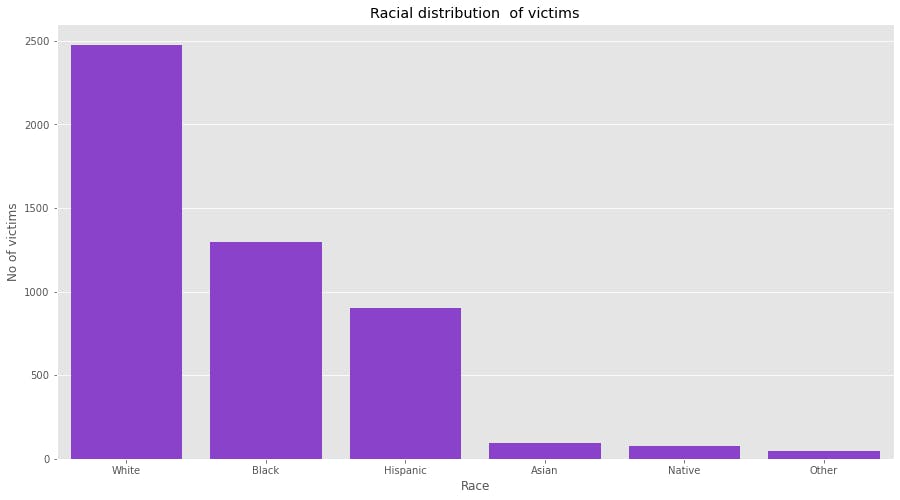
- Over the past 5 years(2015 to 2020), more Whites have died due to police shootings than any other race. The high count of White victims is closely followed by the count of black victims then Hispanic and the rest.
Age: what age group do the victims fall under? Can they be classified as children, teenagers, young adults, middle-aged, or old? Binning the data into 5 categories to the victim's age, Here is what I found.
Age categories:
- Children: 0 to 12 years,
- Teeangers:13 to 19 years,
- Young adults: 20 to 40 years,
- Middle-aged : 40 to 70 years,
- Old: 70 years and beyond.

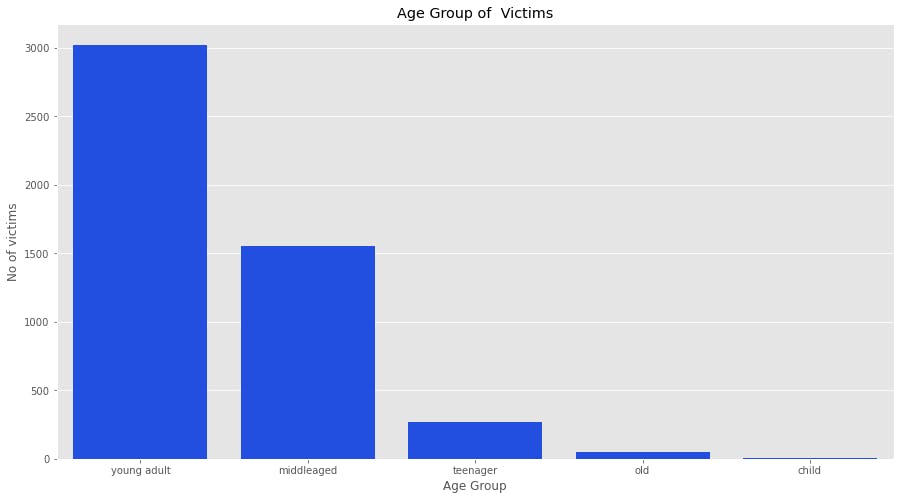 Most victims were young adults. Looking carefully, three children died as a result of the police shooting. Did these kids pose any form of danger?. The data shows these kids were unarmed and in perfect health.
Most victims were young adults. Looking carefully, three children died as a result of the police shooting. Did these kids pose any form of danger?. The data shows these kids were unarmed and in perfect health.

Gender: 95 per cent of victims were male, which is reasonable as the number of males involved in violent crimes is on the high side too. You could check out this page to read more on gender distribution in violent crimes
 Threat level: What level of threat did the victim pose?
Threat level: What level of threat did the victim pose?
 It is justified for the Police to react with brutal force when the suspect poses a threat of serious physical harm either to the officer or to others, But what metric can one use to measure the severity of harm posed? We, therefore, rely on the officer's belief as to whether the suspect poses a threat. Most of the victims posed a threat of physical harm to the police or/and others. Given that the judgement is not objective, there is a need to investigate the nature of the weapon that the victim possessed.
It is justified for the Police to react with brutal force when the suspect poses a threat of serious physical harm either to the officer or to others, But what metric can one use to measure the severity of harm posed? We, therefore, rely on the officer's belief as to whether the suspect poses a threat. Most of the victims posed a threat of physical harm to the police or/and others. Given that the judgement is not objective, there is a need to investigate the nature of the weapon that the victim possessed.
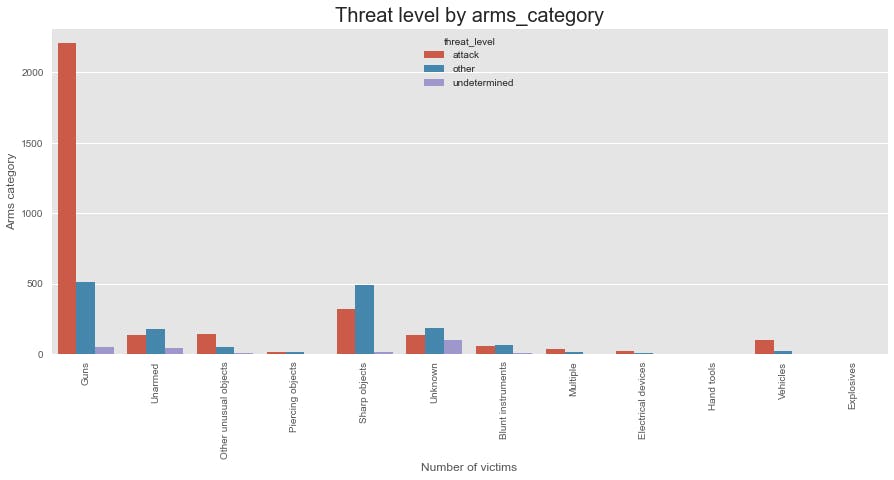 Some victims who were classified as life-threatening did not possess a weapon at the time of the incident. Is it likely that they have a track record of inflicting physical harm? The data is not able to answer the question.
Some victims who were classified as life-threatening did not possess a weapon at the time of the incident. Is it likely that they have a track record of inflicting physical harm? The data is not able to answer the question.
Body camera: The use of body cameras in the Police illuminate ill behaviours of officers for public scrutiny.
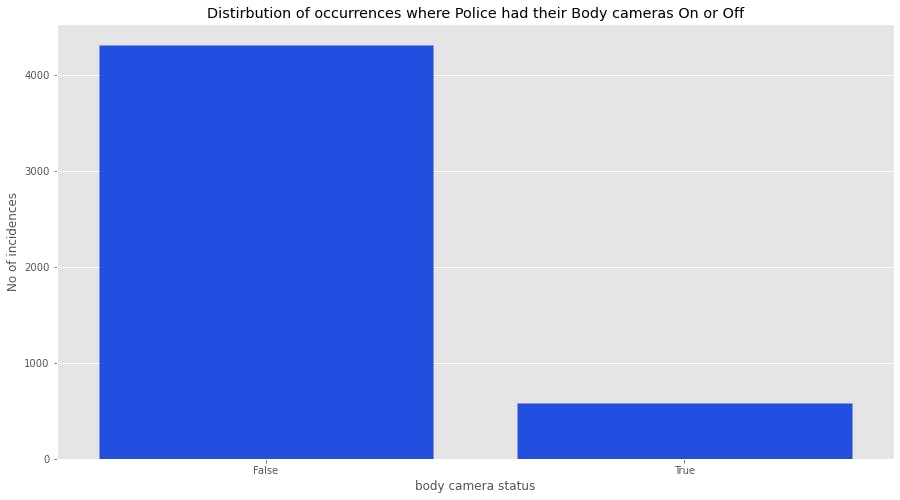
- A high percentage of officers involved in the shooting did not have their body cameras on, was the shooting premeditated?. We just can't say that as we have seen that the majority of the victims constituted a threat to life. Flee status: Criminals are known to try to escape arrest unless that have an alternative, this alternative mainly involves physically assaulting the officer.
 Majority of victims did not try to escape arrest by fleeing. so why then did the officer shoot?
Majority of victims did not try to escape arrest by fleeing. so why then did the officer shoot?
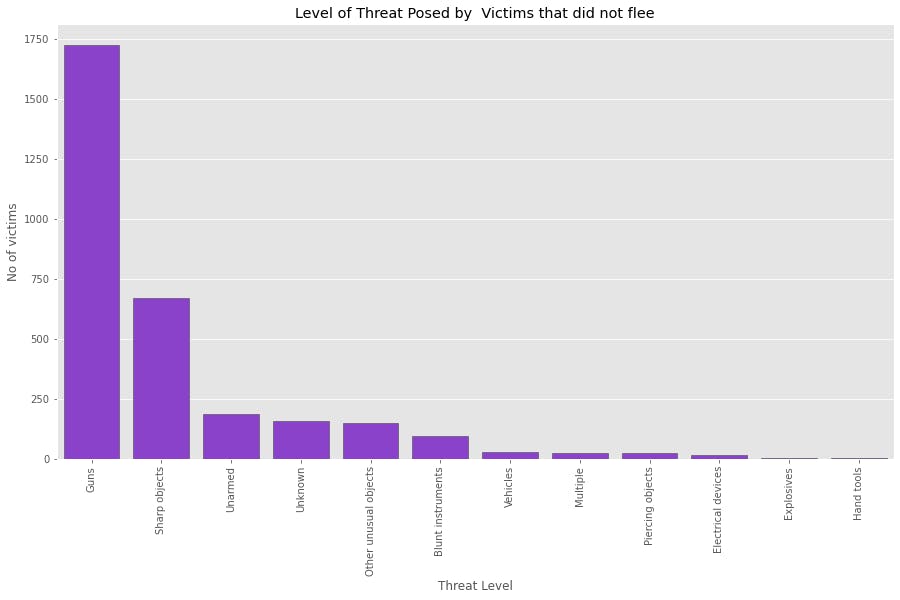 A great number of them did not run because they had weapons. Notice that there are unarmed victims that did not flee. Not posing a threat and not fleeing equates yielding to arrest if convicted for a crime.
187 victims were unarmed and did not try to flee, this data does not have details to prove the reasonableness of the officers that killed these 187 victims. In 162 cases the officers had their body camera turned off.
A great number of them did not run because they had weapons. Notice that there are unarmed victims that did not flee. Not posing a threat and not fleeing equates yielding to arrest if convicted for a crime.
187 victims were unarmed and did not try to flee, this data does not have details to prove the reasonableness of the officers that killed these 187 victims. In 162 cases the officers had their body camera turned off.
Time: What has the advocacy yielded over the years? Has police shooting decreased considerably?
 Over the years there has not been a considerable decrease in the number of victims from fatal police shooting till 2020. The year 2020 saw a series of lockdowns due to the coronavirus pandemic. People lost their jobs and livelihood. Unemployment is greatly linked to the increase in crime rate, hence more activity to trigger the use of force by officers. The data says otherwise, in 2020 there was a great decrease in the number of victims.
Over the years there has not been a considerable decrease in the number of victims from fatal police shooting till 2020. The year 2020 saw a series of lockdowns due to the coronavirus pandemic. People lost their jobs and livelihood. Unemployment is greatly linked to the increase in crime rate, hence more activity to trigger the use of force by officers. The data says otherwise, in 2020 there was a great decrease in the number of victims.

Conclusion
Human life is sacred as it is on it that every form of activity takes shape. While we might be quick to call police shooting in the US a racial movement to perhaps eradicate the Blacks from the State or continually marginalize them as it were during the era of the slave trade, the data has proven that this is not a racial war, rather the killings were greatly influenced by the kind of weapons the victims were carrying, which invariably determines their tendency to inflict harm. Ruling out racism does not justify the activity, there is an urgent need to put measures in place to independently investigate the actions of officers and reduce the killings.
References
- researchgate.net/publication/316837468_The_..
- researchgate.net/publication/333493716_Race..
- You can find the data and analysis file here.
